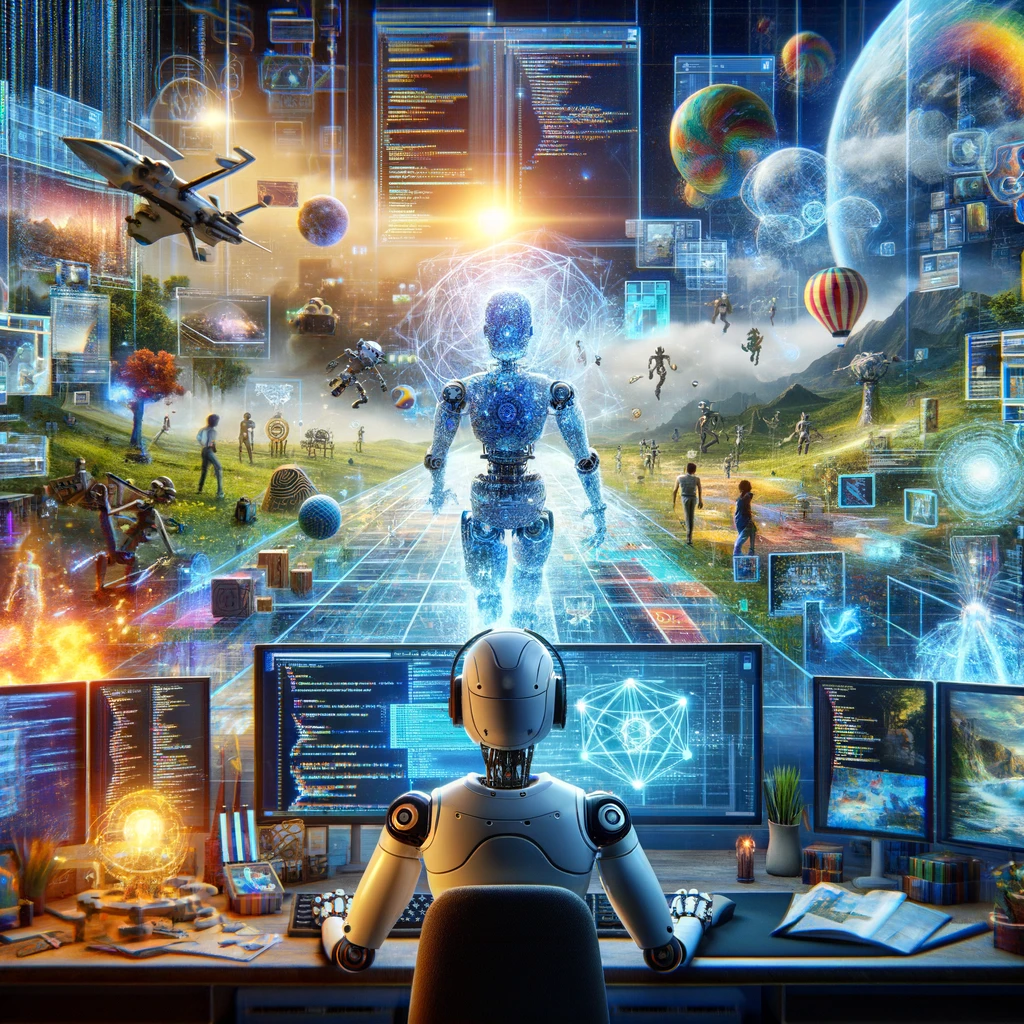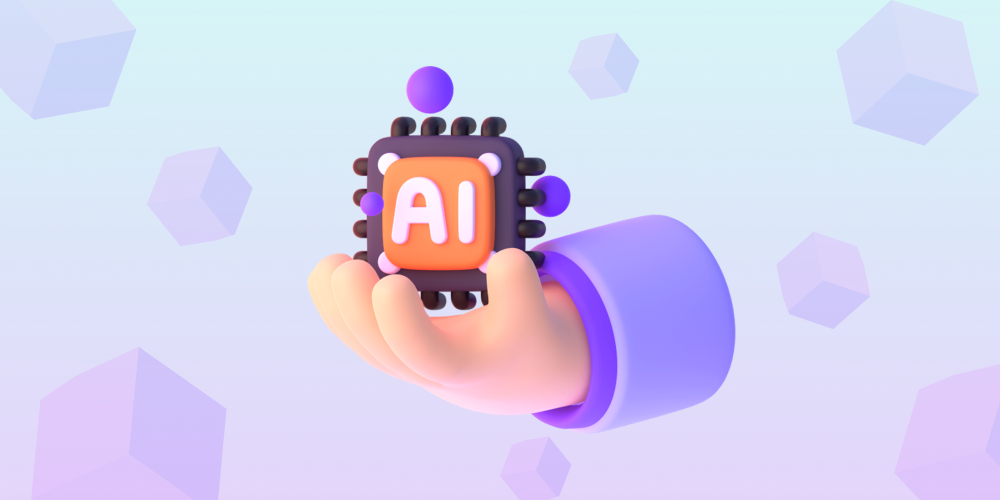KEY POINTS OF THE ARTICLE
- The integration of AI and VR in gaming has the potential to revolutionize the industry.
- AI enhances gaming experiences by creating lifelike characters and adaptive gameplay.
- VR adds a new dimension to gaming with immersive and interactive experiences.
- AI in game development revolutionizes NPCs and creates realistic game environments.
- VR offers strategic advantages in gaming and immersive learning experiences.
- AI and VR are shaping the future of game development and the gaming industry.
Introduction
The integration of AI and Virtual Reality in gaming experiences marks a profound transformation in interactive entertainment. Artificial Intelligence and Virtual Reality have individually revolutionized various industries, but their convergence in gaming has unlocked new dimensions. AI algorithms enhance player experiences by generating intelligent NPCs and creating dynamic environments. Virtual Reality immerses users in a virtual world, offering realistic simulations and interactive gameplay. Together, AI and VR push the boundaries of gaming, creating immersive and engaging experiences that blur the lines between the real and virtual worlds. This fusion of technologies not only elevates gameplay but also shapes the future of the gaming industry, paving the way for innovative advancements and unprecedented user experiences.
The Convergence of AI and VR in Modern Gaming
The integration of artificial intelligence (AI) and virtual reality (VR) has brought about a profound transformation in the gaming industry. AI enhances gaming experiences by creating lifelike characters, adaptive gameplay, and realistic game environments. VR, on the other hand, takes gaming to a new level with immersive and interactive experiences. The convergence of AI and VR in modern gaming has opened up a world of possibilities, revolutionizing how games are developed and played.
Collaborating with an ar game development studio enables developers to effectively harness these technologies, creating innovative and engaging gaming experiences.
The Emergence of AI in Enhancing Gaming Experiences
AI has emerged as a game-changer in revolutionizing gaming experiences. By leveraging AI algorithms, developers create intelligent non-player characters (NPCs) that adapt to player behavior, enhancing the overall realism and immersion of games. This technology goes beyond traditional scripted responses, allowing NPCs to dynamically interact with players in real-time, offering personalized challenges and experiences. Moreover, AI-driven virtual characters can recognize voice commands and engage in natural language conversations, elevating interactive experiences to new heights. The profound transformation brought by AI in gaming underscores its crucial role in shaping the future of the gaming industry, promising exciting advancements in player engagement and gameplay dynamics.
Virtual Reality: A New Dimension in Interactive Gaming
Immersive and transformative, virtual reality (VR) ushers in a new era in interactive gaming experiences. By seamlessly integrating players into virtual worlds, VR takes gaming to the next level of realism and immersion. In VR environments, game developers leverage AI algorithms for creating dynamic and realistic scenarios that respond to player behavior in real-time. VR gaming goes beyond traditional gameplay, offering users a chance to explore novel worlds and storylines. With advancements in object recognition and AI, VR game development promises users unparalleled experiences that blur the line between the virtual and real worlds. In this convergence of artificial intelligence and VR, the gaming industry witnesses a profound transformation in user experiences.
AI Integration in Game Development: A Revolution
The ai integrated game development has brought about a revolution in the industry. AI algorithms are used to create lifelike non-player characters (NPCs), design realistic game environments, and generate dynamic game content. With AI, game developers can create games that are more immersive, dynamic, and lifelike than ever before. AI has transformed the way games are developed, pushing the boundaries of what is possible in virtual worlds.

Crafting Intelligent Non-Player Characters (NPCs) with AI
Non-player characters (NPCs) play a crucial role in any game, adding depth and realism to the virtual world. With the ai integration, game developers can now create intelligent NPCs that enhance the gameplay experience. AI algorithms analyze player behavior and adapt NPC behavior accordingly, making interactions with NPCs more immersive and unpredictable. Here are some key points to highlight about crafting intelligent NPCs with AI:
- AI-driven NPCs can learn from player actions and adapt their behavior in real-time
- NPCs can respond to different gameplay scenarios, creating a dynamic and engaging experience
- AI allows NPCs to learn and evolve as the game progresses, making interactions more lifelike
- Intelligent NPCs enhance the overall gameplay experience, adding depth and realism to the virtual world
The integration ai game development has revolutionized the way NPCs are created, bringing a new level of intelligence and immersion to games. With intelligent NPCs, players can have unique and personalized experiences, making the game world feel more alive and interactive.
Leveraging AI for Realistic and Dynamic Game Environments
In modern gaming, artificial intelligence plays a pivotal role in creating realistic and dynamic game environments. AI algorithms have revolutionized game development by enhancing the immersion and realism of virtual worlds. By leveraging AI, game developers can infuse environments with dynamic elements that adapt to player behavior, creating a more engaging experience. From object recognition to content generation, AI contributes to the authenticity of virtual landscapes, pushing the boundaries of gaming realism. These advancements in AI technology have led to profound transformations in how games are designed and played, ushering in a new era of immersive and interactive experiences for gamers worldwide. Leveraging AI in game environments opens up endless possibilities for pushing the boundaries of gaming realism to the next level.
Strategic Advantages of VR in Gaming
Virtual Reality (VR) brings strategic advantages to gaming by immersing players in a fully interactive and sensory-rich environment. By integrating VR technology, game developers can offer players unparalleled levels of engagement and realism. VR enables experiences beyond traditional gaming, allowing for innovative gameplay mechanics and storytelling methods. These advancements lead to enhanced user experiences, making VR a crucial component in shaping the future of gaming. The ability to transport players into a virtual world where they can interact with characters and environments in a lifelike manner elevates gaming experiences to the next level. VR’s strategic advantages lie in its capacity to revolutionize how games are played and experienced, opening up new possibilities for the gaming industry.
Immersive Learning: The Role of VR in Educational Games
Virtual reality (VR) has a significant role to play in educational games development, offering immersive learning experiences that go beyond traditional teaching methods. Here are some key points to highlight:
- VR provides an immersive learning environment that engages students and enhances their learning experiences
- The vr integration education allows students to interact with virtual objects and environments, making learning more engaging and hands-on
- VR in educational games offers a safe and controlled environment for students to explore and experiment with different concepts
- VR enhances spatial awareness and critical thinking skills through interactive and immersive learning experiences
The role of VR in educational games is to revolutionize the way students learn and engage with educational content. By providing immersive learning experiences, VR opens up new possibilities for educational institutions to create engaging and interactive learning environments.

VR and Integrated Graphics: Pushing the Limits of Visual Fidelity
Virtual reality (VR) gaming relies heavily on integrated graphics to push the limits of visual fidelity. The combination vr with integrated graphics creates stunning visuals that immerse players in lifelike and realistic virtual worlds. Here are some key points to highlight:
- Integrated graphics in VR gaming allows for the rendering of lifelike textures, lighting effects, and visual details
- The visual fidelity of VR gaming enhances the player’s sense of presence and immersion in the virtual world
- Integrated graphics optimize performance and ensure smooth gameplay in VR environments
- Visual fidelity is a crucial aspect of game design in VR, as it contributes to the overall immersive and realistic experience
The fusion of VR and integrated graphics in gaming is paving the way for a new era of visually stunning and immersive gameplay experiences. VR gaming with integrated graphics pushes the boundaries of what is possible in terms of visual fidelity, creating breathtaking virtual worlds that captivate players.
The Business of AI and VR in Gaming
The integration of artificial intelligence (AI) and virtual reality (VR) in gaming is not only transforming gameplay and player experiences but also reshaping the business landscape. Here are some key points to highlight:
- AI and VR offer new revenue models and monetization strategies for gaming companies
- AI and VR open up opportunities for innovative marketing strategies and personalized player experiences
- AI and VR enable gaming companies to explore new horizons and stay ahead of the competition
The business of AI and VR in gaming is a rapidly growing industry, with immense potential for revenue generation and business growth. Gaming companies that embrace AI and VR are well-positioned to succeed in the ever-evolving gaming landscape.
Unveiling New Revenue Streams Through AI and VR Integration
The integration of artificial intelligence (AI) and virtual reality (VR) in gaming has unleashed new revenue streams and monetization opportunities for gaming companies. Here are some key points to highlight:
- AI-powered games can offer personalized in-game purchases, enticing players to spend more on virtual goods, upgrades, or additional content
- AI algorithms enable the creation of dynamically generated content, such as microtransactions, subscriptions, or personalized offers
- VR gaming provides opportunities for in-game advertising that can be personalized and targeted, enhancing both player experience and advertising effectiveness
- The integration of AI and VR in gaming opens up new avenues for revenue generation, providing gaming companies with diverse opportunities to monetize their products and services
The integration of AI and VR in gaming has ushered in a new era of revenue generation and monetization strategies. Gaming companies that leverage AI and VR in their business models can tap into new revenue streams and stay ahead of the competition.
AI and VR: A Catalyst for Innovative Marketing Strategies
AI and VR technologies have catalyzed the transformation of marketing strategies across different industries. By leveraging AI algorithms for targeted content generation and utilizing VR experiences for immersive storytelling, companies are redefining user engagements. Virtual characters and interactive simulations enhance user experiences, while AI-powered voice recognition personalizes interactions. This convergence offers a new era of marketing, where user data translates into tailored campaigns, leading to higher engagement levels and brand loyalty. The fusion of AI and VR presents a significant potential for businesses to create impactful campaigns that resonate with audiences on a deeper level, revolutionizing the way marketing strategies are conceived and implemented.
Overcoming Challenges in AI and VR Integration
The integrated ai solutions and virtual reality in gaming experiences has brought about a profound transformation in the gaming industry. This convergence presents game developers with exciting opportunities to create immersive and interactive experiences for players. However, this integration is not without its challenges. One significant hurdle is the seamless synchronization of AI algorithms with VR environments to ensure a realistic and engaging gameplay experience. Moreover, ensuring the privacy and security of user data in AI-driven VR games poses a crucial concern for developers. Overcoming these challenges requires a deep understanding of both NLP terms and the technical intricacies involved in merging AI and VR technologies effectively.
Addressing Privacy Concerns in AI-Driven Games
Privacy concerns are a significant consideration in the integration of artificial intelligence (AI) in gaming. Here are some key points to highlight:
- Gaming companies must prioritize user data privacy and implement strict security measures to safeguard personal information
- Transparent data collection practices, explicit consent mechanisms, and user control over data sharing are essential for maintaining user privacy in gaming
- Privacy regulations and industry standards play a crucial role in shaping data collection practices in gaming
- User experience and data privacy must go hand in hand, with gaming companies finding a balance between personalized experiences and respecting user privacy
Addressing privacy concerns is crucial for the successful integration of AI in gaming. By prioritizing user data privacy and following ethical guidelines, gaming companies can build trust and foster an inclusive gaming environment.
Ensuring Ethical Use of AI and VR in Gaming
Ensuring the ethical use of artificial intelligence (AI) and virtual reality (VR) in gaming is essential for maintaining user privacy and trust. Here are some key points to highlight:
- Gaming companies must consider the ethical implications of AI and vr integration and make a commitment to responsible use
- Mitigating potential AI bias and discrimination is crucial for fair and inclusive gameplay experiences
- Protecting user data privacy and implementing transparent practices are essential for maintaining ethical standards in gaming
- Collaboration with diverse development teams, data collection, and user feedback can improve the accuracy and inclusivity of AI algorithms in gaming
By prioritizing ethical use and considering the impact of AI and VR on user privacy, gaming companies can create a gaming environment that is fair, inclusive, and ethically responsible.
Future Trends: Where AI Meets VR in Gaming
The future of gaming is an exciting realm where AI seamlessly converges with VR technology, creating unparalleled interactive experiences for gamers. In this landscape, AI algorithms are evolving to shape intricate game narratives and storytelling, elevating immersion to new heights. As AI and VR merge, the boundaries between virtual and real worlds blur, offering players a mixed reality gaming experience that transcends traditional gameplay. The integration of AI and VR is not just a trend; it is a profound transformation that promises to redefine the gaming industry in the years to come, setting the stage for unprecedented innovation and user experiences in the gaming world.
The Evolution of AI Game Narratives and Storytelling
Artificial intelligence (AI) is driving the evolution of game narratives and storytelling. Here are some key points to highlight:
- AI algorithms analyze player decisions and behavior, generating narratives that adapt and evolve based on player choices
- Interactive storytelling allows players to become active participants in shaping game narratives, immersing themselves in a world where their actions have real consequences
- AI-driven narratives open up new possibilities for player engagement, sparking curiosity, exploration, and emotional connections within virtual worlds
- The fusion of AI and storytelling sets the stage for a new era of gaming, where the boundaries of imagination are constantly pushed, captivating players with immersive and dynamic narratives
AI-driven narratives and storytelling are reshaping the future of gaming, creating dynamic and immersive experiences that engage players on a whole new level.

Merging Worlds: The Future of Mixed Reality Games
The future of gaming lies in the merging of mixed reality, where virtual reality (VR), augmented reality (AR), and the real world intersect. Here are some key points to highlight:
- Mixed reality games seamlessly blend virtual and real-world elements, creating unique and interactive experiences
- AR technology enhances the real-world environment by overlaying digital content, creating a mixed reality experience
- Virtual worlds and real-world interactions merge in mixed reality games, offering players a new level of immersion and engagement
The merging of virtual and real worlds in mixed reality games is the future of gaming. This integration creates unique and immersive experiences that bridge the gap between fiction and reality, captivating players in a whole new way.
AI in VR App Development: A New Frontier
In vr app development, AI heralds a new era of possibilities. By leveraging artificial intelligence, developers can enhance user experiences in immersive virtual environments. AI algorithms play a crucial role in creating dynamic and interactive VR applications, ensuring realism and engagement. Incorporating machine learning and natural language processing, AI enriches content generation and user interactions within the virtual world. Recognizing objects, understanding player behavior, and voice recognition are just some ways AI elevates VR experiences to the next level. The fusion of AI and VR opens doors to innovative gameplay mechanics, realistic simulations, and personalized storylines, shaping the future landscape of gaming and app development.
Best Practices for Developing Engaging VR Apps with AI
Developing engaging virtual reality (VR) apps with artificial intelligence (AI) requires following best practices. Here are some key points to highlight:
- Understand the target audience and design VR apps that cater to their preferences and needs
- Leverage AI algorithms to personalize and adapt the VR app experience to individual users
- Optimize performance and ensure smooth gameplay in VR apps through AI-driven optimization techniques
- Test and gather user feedback to continuously improve and enhance the VR app experience
Following best practices in developing VR apps with AI ensures that users have engaging and immersive experiences. By utilizing AI technologies effectively, VR app developers can create experiences that captivate and delight users.
The Role of AI in Streamlining VR App Development Processes
AI plays a pivotal role in optimizing the VR app development workflow. By automating tasks like bug detection, asset generation, and testing, AI accelerates the development process, leading to faster and more efficient delivery of VR applications. Machine learning algorithms can analyze user interactions to enhance user experiences, making VR apps more intuitive and engaging. Additionally, AI-powered tools can streamline content creation by assisting developers in generating realistic environments and interactive elements. This seamless integration of AI in VR app development not only boosts productivity but also ensures the creation of high-quality, immersive experiences for users, shaping the future landscape of virtual reality applications.
Conclusion
Get ready to level up your gaming experience with the integration of AI and Virtual Reality! The future of gaming is here, offering immersive environments, intelligent NPCs, and interactive learning opportunities. Unveil new revenue streams, innovative marketing strategies, and push the limits of visual fidelity. Embrace the strategic advantages of AI and VR while overcoming challenges like privacy concerns and ethical use. Stay ahead of the curve by exploring the evolution of game narratives, mixed reality games, and best practices for developing engaging VR apps with AI. Ready to embark on this exciting journey? Get in touch to dive into the world where AI meets VR in gaming!





























